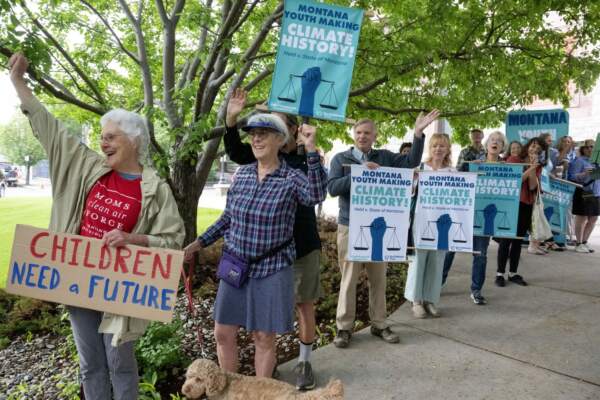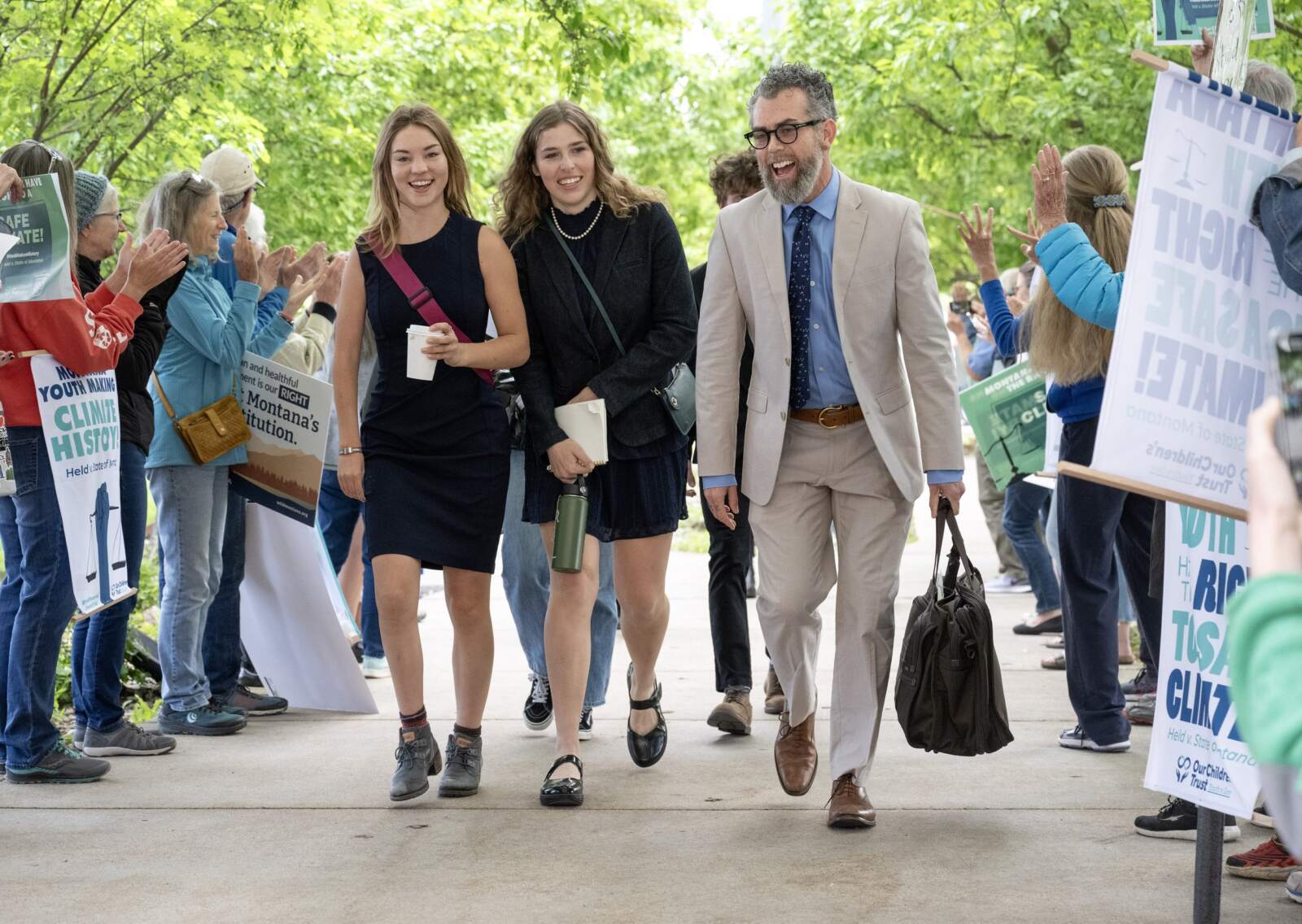When the kids took Montana to court
On an early June morning last year, I sat down in my apartment to start another day of remote work when I saw a newsletter in my inbox titled, “Youth activists sue Montana.” It was referencing the upcoming trial in the highly anticipated climate lawsuit Held v. Montana, where 16 young people were suing the state –– one of the largest coal producers in the country –– for contributing to the climate crisis and violating their right to a healthy environment. (In fact, Montana is one of the few states that guarantees residents the right to a healthy environment in its constitution.)
Reading about the case and the impending trial, I was excited and nervous; I admired the youth climate advocates but also felt skeptical towards the judicial system upon which the lawsuit’s fate rested. I quickly tempered my expectations and assumed that the lawsuit would likely be unsuccessful. But I was also hopeful that it could at least spark broader conversations around the impacts of the climate crisis.
On August 14, the judgment came and I was pleased to learn that I was wrong. The Montana judge, District Court Judge Kathy Seeley, had ruled in favor of the youth plaintiffs. The ruling affirmed their right to a healthy environment, found Montana to be in violation of those rights, and struck down two state statutes that promoted reckless fossil fuel development. In other words, 16 kids took a U.S. state to court for contributing to climate change and won.
Lessons Learned for Climate Communicators and Advocates
As a young person working in the environmental space, this monumental victory made me feel more determined and hopeful about our future. But I also wondered: how did this youth-led group become successful? What can we climate advocates and communicators learn from their success?
Below, I explore some of the winning climate communication strategies from the case:
Lesson 1: Building a case through climate storytelling
The youth plaintiffs all passionately testified about how climate change is impacting them personally. Their testimony included stories about droughts on a family ranch, wildfire smoke affecting asthma, and seasonal changes threatening Indigenous cultural traditions.
- Why it works: Personal stories such as these tend to be the most persuasive because they tell local and current stories of climate impacts. Local stories make it easier for judges, policymakers, and other audiences to understand climate change tangibly.
Lesson 2: Assembling a strong coalition with a diversity of perspectives
The youth plaintiffs ranged from 6 to 22 in age and represented a broad range of geographic and cultural backgrounds, consisting of climate advocates, Tribal members, ranchers, hunters, skiers, and more.
- Why it works: Diverse perspectives help to show the widespread and varied personal impacts of climate change, further reinforcing the notion that climate change is impacting the here and now in a multitude of ways.
Lesson 3: Backing stories up with strong expert evidence
Our Children’s Trust –– the coalition’s legal representation –– strategically had the youth plaintiffs first testify about personal climate impacts, and then provided quantifiable evidence of these harms through expert testimony from scientists, medical doctors, psychologists, and cultural experts.
- Why it works: This two-tiered strategy allows for climate stories to be both emotionally and logically persuasive. This helps to visualize the visceral and varied impacts of climate change through personal stories while grounding those experiences in “hard” evidence from subject-matter experts.
Lesson 4: Centering the youth and their futures
Young people are among the most vulnerable groups to climate change, in terms of threats to livelihood as well as mental and physical health. And so, the court ultimately ruled in favor of the plaintiffs stating that: “[Due to their] unique vulnerabilities, their stages of development as youth, and their average longevity on the planet in the future, Plaintiffs face lifelong hardships resulting from climate change.”
- Why it works: Young people not only face heightened risk from future climate impacts but also tend to be the most passionate and outspoken group in taking bold climate action. Centering young climate stakeholders – as well as other groups highly impacted by climate change – in advocacy and communication efforts can help tell stronger and more actionable climate stories.
What Held v. Montana means for the future
Held v. Montana is a win not just for Montana youth; it is a win for the entire environmental movement, especially young people around the globe who often feel unheard by the governing bodies representing them.
The systemic challenges we face in getting to a more sustainable and equitable future can often feel insurmountable. But if we take the time to learn from climate victories like Held v. Montana, we can find more joy in our work, advance lasting solutions, and ensure that future generations don’t have to testify in court to achieve a livable planet.
Learn more: Montana is just the beginning. Our Children’s Trust is facilitating multiple youth-led climate lawsuits across the country. Be sure to check out their work to learn more and find out how you can support youth-led climate action in your region.

Montanans from around the state cheering on the youth in Helena (Photo by Robin Loznak); Courtesy of Our Children’s Trust.
Dylan Macy is a student at USC working on his Masters in Public Relations and Advertising.
